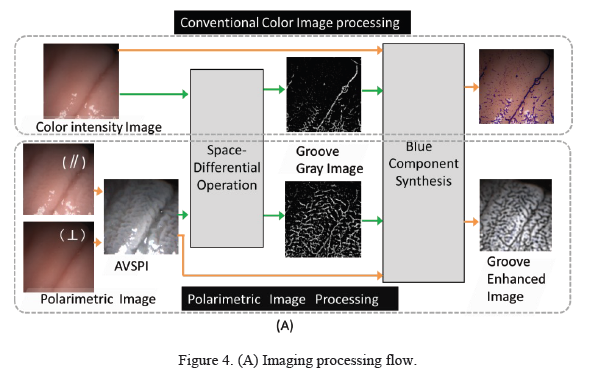FluxData’s FD-1665 used in Image Enhancement Of Surface Microstructure On Mucosa For Polarimetric Endoscopy study
Katsuhiro Kanamori from Device Research Laboratory Advanced Research Division, Panasonic Corporation in Japan recently concluded their research into endoscopic imaging of gastric mucosa for the purpose of detecting colon cancer. FluxData’s FD-1665 Polarimetric imaging system was used as part of the research.
Cancer affects the gastric areas surrounded by pits in the gastric mucosa. The cancer is detected via change in texture patterns. Traditionally, these changes in texture are very difficult to detect with standard white light endoscopes.
The alternative to white light endoscopy is an invasive process in which indigo carmine blue fluid is sprayed on the tissue, allowing the observer to see pooling in the surface microgrooves. This process can cause damage/bleeding to the mucosa and rapid colorization inhibits further observation.
The issues associated with the spray have prompted research into non-invasive digital image processing. This process makes use of a “pseudo-indigo carmine image” created by using color intensity images from a conventional endoscope and executes nonlinear edge detection looking for concave groove areas that should appear darker as a result of generation of shadows. This method is not yet as effective as traditional spraying. The author is studying the extraction surface geometric information of the mucosa using polarimetric imaging instead of conventional intensity imaging.
Method for experiment:
The author’s method is image enhancement of mucosal surface using de-polarization properties of the backscattered light in the surface groove regions and deeper layers of the mucosa. Two pairs of parallel and crossed nicols polarimetric images are captured under differently linear polarized illumination, taking into account illumination from a slanted angle. The pairs are then subtracted to enhance the contrast of the surface structure. Finally, the image is enhanced using a space frequency enhancement process which amplifies the mesh-like pattern seen in indigo carmine sprayed images.








